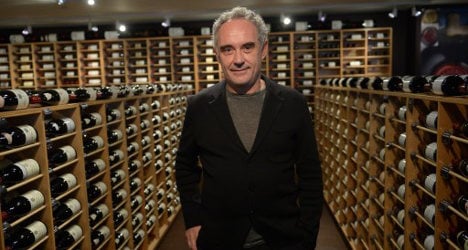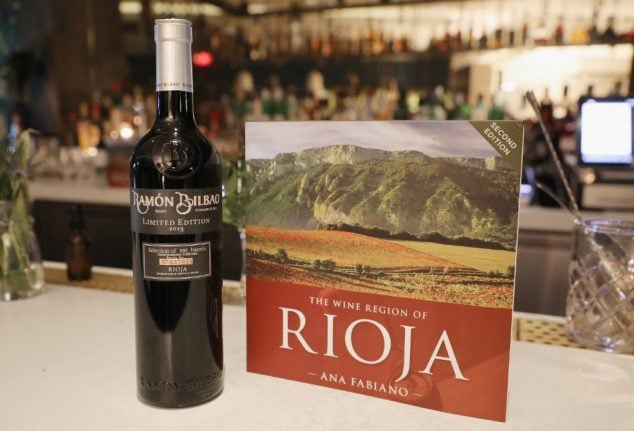Wine-lovers will be able to buy thousands of bottles, collected over the years by Adria, whose restaurant was ranked Britain's Restaurant Magazine's best restaurant in the world a record five times.
The sale, at upscale Sotheby's auction house in New York, will benefit Adria's foundation, where, two years after the legendary Spanish restaurant shut its doors, Adria, considered one of the best experimental chefs, now works full-time.
"It's crazy, I'm working harder than ever," Adria said of the foundation, which he described as "a little Cirque de Soleil, a little Dali museum, a little medialab."
This is the second auction of Adria's cellar: in Hong Kong on April 3, a first round brought in around $2 million.
Also on offer Friday are two kitchen jackets used and signed by the chef, menus, wine lists, dishes and other kitchen utensils.
And bidders can also bid on a dinner for four with Adria, in his new Barcelona restaurant, Tickets.
A similar lot at the Hong Kong auction earlier in the month went for more than $28,000.
"All the money will go to the elBulli Foundation," said the chef, who is enthusiastically travelling the world for his new project.
Adria estimates it will take five million euros ($6.5 million) to get the elBulli foundation running, and another two million euros ($2.6 million) a year to keep it going.
A 40-strong "creative team" will work there on new "ideas, concepts and techniques," he said. And all of it, he explained, will be posted on the Internet daily, "for all the cooks in the world."
He would be happy to welcome 200,000 visitors a year, he said, but predicted "there will be many more."
The renowned chef also speaks enthusiastically of his "Bullipedia" project — a huge database on food and cooking that aims to provide, "in an orderly manner," he insists, "everything people dream about, on the Internet."
Research for the database started a year ago and has taken his team back to the very earliest cookbooks.
Adria marvels that food has, in recent years, become "the most important social network. Facebook isn't the most important social network, it's food. And why? Because food is pure joy."
In the two years since he closed the Michelin three-star elBulli restaurant, he says he's never worked so hard.
"We have three exhibits around the world, a film in production in Hollywood, and we are currently very focused on the conceptual and architectural design for the foundation," he said.
A book is also in the works, "4,000 pages long," he said. He speaks of "joy and innovation," and of the importance of interdisciplinary work in today's world.
Yet, despite the grueling schedule — Adria spoke between two museum visits in New York — he is savoring the freedom he associates with his future foundation.
"We are going to be able to do what we want. There won't be any chasing the Michelin's three stars, no prize to win. It's creativity for creativity's sake," he said.




 Please whitelist us to continue reading.
Please whitelist us to continue reading.
Member comments